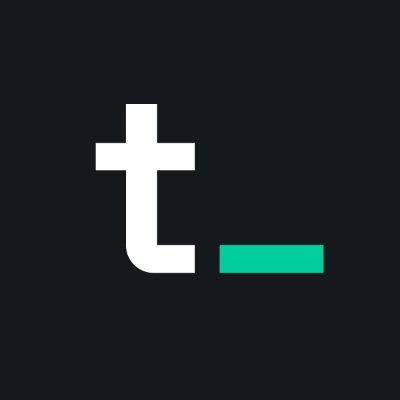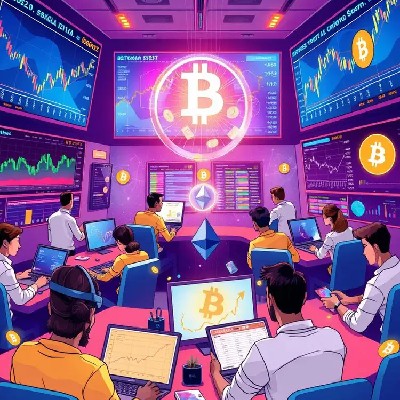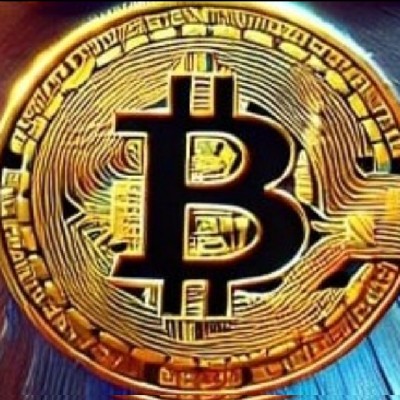
In the ever-evolving realm of blockchain technology, Particle Network emerges as a beacon of innovation, seamlessly weaving together the fragmented threads of the Web3 universe. At its heart lies the $PARTI token, a digital asset that's not just a currency, but a passport to a unified blockchain experience.
A Symphony of Chains
Imagine a world where the cacophony of disparate blockchains harmonizes into a single, melodious symphony. Particle Network conducts this orchestra through its groundbreaking Universal Accounts, granting users a singular identity and balance that resonates across all chains. No longer must one juggle multiple wallets or grapple with the complexities of cross-chain transactions; with Particle Network, the blockchain becomes a cohesive, navigable landscape.
The Pulse of PARTI
As of April 1, 2025, the PARTI token pulses with vitality, priced at approximately $0.223. Despite the market's ebb and flow, with a 7.38% dip in the last 24 hours, PARTI holds steadfast with a market capitalization of around $52 million. Its circulating supply stands at 233 million tokens, a testament to its growing presence in the crypto ecosystem.
A Journey Through Time
The odyssey of Particle Network is marked by significant milestones:
Genesis (Q2 2022): The inception of Particle Network, fueled by a $1.8 million pre-seed round, sowing the seeds for a new era in blockchain interoperability.
Ascent (Q1 2023): A $7 million seed round propels the project forward, attracting visionaries and pioneers to its cause.
Evolution (June 2024): A monumental $15 million Series A funding round, underscoring the industry's faith in Particle Network's vision.
Culmination (March 25, 2025): The Token Generation Event (TGE) unveils PARTI to the world, marking the dawn of a new chapter in decentralized finance.
The Essence of Unity
Particle Network transcends the traditional boundaries of blockchain, embodying the essence of unity through:
Universal Liquidity: A seamless flow of assets across chains, dissolving barriers and fostering a truly interconnected ecosystem.
Universal Gas: The liberation from multiple gas tokens, allowing transactions to be conducted with any asset, simplifying the user experience.
Chain Abstraction: The art of making complex blockchain interactions intuitive, enabling users and developers to engage with the technology effortlessly.
Embarking on the Particle Voyage
To join the Particle Network odyssey, one can acquire PARTI tokens on prominent exchanges such as Bybit, Binance, and LBank. These platforms serve as gateways to a universe where blockchain boundaries blur, and a unified digital experience awaits.
In Conclusion
Particle Network and its PARTI token are not merely additions to the blockchain landscape; they are catalysts for a paradigm shift towards unity and simplicity in the decentralized world. As we stand on the precipice of this new frontier, Particle Network invites us all to partake in the journey towards a seamlessly interconnected Web3 cosmos.
# __The Impact of Virtual Reality on Architecture and Real Estate__
Virtual reality (VR) is transforming the architecture and real estate industries, providing a new and innovative way to design, build, and sell properties. By utilizing VR technology, architects, designers, and real estate agents can create immersive and interactive experiences, enabling clients to fully visualize and explore spaces before they are built. In this article, we'll explore the impact of VR on architecture and real estate, highlighting the benefits, challenges, and future directions of this emerging technology.
# Benefits of Virtual Reality in Architecture and Real Estate
The benefits of VR in architecture and real estate are numerous, including:
1. *Improved Visualization*: VR enables clients to fully visualize and explore spaces, reducing the risk of miscommunication and improving design accuracy.
2. *Enhanced Collaboration*: VR facilitates collaboration between architects, designers, and clients, enabling real-time feedback and design iteration.
3. *Increased Efficiency*: VR streamlines the design and construction process, reducing the need for physical prototypes and minimizing errors.
4. *Cost Savings*: VR can reduce costs associated with physical prototypes, travel, and site visits.
# Challenges Facing Virtual Reality Adoption in Architecture and Real Estate
Despite the benefits of VR in architecture and real estate, there are several challenges facing adoption, including:
1. *High Upfront Costs*: The cost of VR equipment and software can be prohibitively expensive for small firms and individuals.
2. *Limited Content Creation*: Creating high-quality VR content requires specialized skills and expertise, limiting the availability of VR experiences.
3. *User Experience*: VR experiences can be disorienting and uncomfortable for some users, particularly those with motion sickness or other sensitivities.
4. *Integration with Existing Workflows*: VR technology must be integrated with existing workflows and software, requiring significant investment in training and implementation.
# Future Directions for Virtual Reality in Architecture and Real Estate
The future of VR in architecture and real estate holds much promise, with potential developments in:
1. *Cloud-Based VR Platforms*: Cloud-based VR platforms can enable seamless collaboration and content sharing, reducing the need for expensive hardware and software.
2. *Artificial Intelligence and Machine Learning*: AI and ML can enhance VR experiences, enabling real-time design iteration and optimization.
3. *Mixed Reality and Augmented Reality*: Mixed reality (MR) and augmented reality (AR) can further blur the lines between physical and digital environments, enabling new and innovative applications in architecture and real estate.
4. *Virtual Property Tours*: Virtual property tours can become increasingly common, enabling clients to explore properties remotely and reducing the need for physical site visits.
# Conclusion
Virtual reality is transforming the architecture and real estate industries, providing a new and innovative way to design, build, and sell properties. While challenges remain, the benefits of VR are clear, and the industry is expected to continue to grow and evolve in the coming years.
# Recommendations
1. *Invest in VR Equipment and Software*: Invest in VR equipment and software to enable the creation of high-quality VR experiences.
2. *Develop VR Content Creation Skills*: Develop VR content creation skills to enable the creation of high-quality VR experiences.
3. *Integrate VR with Existing Workflows*: Integrate VR technology with existing workflows and software to enable seamless collaboration and content sharing.
4. *Promote VR Adoption*: Promote VR adoption among architects, designers, and real estate agents to enable the widespread adoption of this emerging technology.
5. *Support Research and Development*: Support research and development in VR technology, focusing on cloud-based platforms, AI, and MR/AR applications.
Day trading ❌ Swing trading. 🧐😵💫
Day trading and swing trading are two popular trading strategies used in financial markets. While both strategies aim to profit from market fluctuations, they differ in their approach, time frame, and risk management.
Day Trading:
1. Intra-day trading: Day traders buy and sell securities within a single trading day.
2. Closing positions before market close: Day traders close all positions before the market closes to avoid overnight risks.
3. Frequent trading: Day traders make multiple trades throughout the day.
4. Technical analysis: Day traders rely heavily on technical analysis, using charts and indicators to identify trading opportunities.
5. Risk management: Day traders use stop-loss orders and position sizing to manage risk.
Swing Trading:
1. Short-term trading: Swing traders hold positions for a shorter period than investors, typically from a few days to a few weeks.
2. Holding positions overnight: Swing traders may hold positions overnight, exposing themselves to overnight risks.
3. Less frequent trading: Swing traders make fewer trades than day traders, as they hold positions for longer periods.
4. Combination of technical and fundamental analysis: Swing traders use a combination of technical and fundamental analysis to identify trading opportunities.
5. Risk management: Swing traders use stop-loss orders, position sizing, and risk-reward ratios to manage risk.
Key Differences:
1. Time frame: Day traders hold positions for minutes or hours, while swing traders hold positions for days or weeks.
2. Trading frequency: Day traders make multiple trades throughout the day, while swing traders make fewer trades.
3. Risk management: Day traders focus on managing risk through quick trade execution and tight stop-loss orders, while swing traders use a combination of risk management strategies.
4. Analysis: Day traders rely heavily on technical analysis, while swing traders use a combination of technical and fundamental analysis.
Choosing Between Day Trading and Swing Trading:
1. Trading style: Day trading suits traders who can dedicate several hours a day to monitoring markets and making trades. Swing trading suits traders who prefer to hold positions for longer periods.
2. Risk tolerance: Day trading involves higher risk due to the fast-paced nature of the markets. Swing trading involves lower risk, as positions are held for longer periods.
3. Market analysis: Day traders rely on technical analysis, while swing traders use a combination of technical and fundamental analysis.
4. Time commitment: Day trading requires a significant time commitment, while swing trading requires less time.
Thank you...🙂
$BTC $ETH $SOL $PI $AI $XRP $DOGE $SHIB $BONK $COQ $CATS $BGB $BNB $U2U $WUF $WHY $SUNDOG $PARTI $CEC $BLUR
Surge in Trading Volume Signals Strong Market Interest in $PARTI
The recent launch of Particle Network’s token ($PARTI ) on Bitget has witnessed an explosive surge in trading volume, surpassing $1 billion in 24-hour spot trading and $4 billion in contract trading. This level of trading activity is a significant indicator of strong market interest, speculative momentum, and potential long-term adoption.
However, trading volume alone does not guarantee sustained success. In this deep analysis, we will examine:
1. Why $PARTI is attracting such high trading volumes
2. How it compares to other recent token launches
3. What this means for the future of the token
4. Potential risks and sustainability of its trading momentum
1. Why Is $PARTI Attracting Such High Trading Volume?
A. Listing on Bitget and Market Hype
Bitget is one of the leading global cryptocurrency exchanges with a large user base, especially among retail traders.
New token listings often attract high speculation, as traders rush to buy early and capitalize on potential price volatility.
Marketing efforts and strategic partnerships leading up to the listing helped generate hype, encouraging high-volume participation.
B. Strong Narrative Around Chain Abstraction
$PARTI is the first major token focused on Chain Abstraction technology, which enhances multi-chain interoperability.
Investors and developers see this as an innovative solution that could drive future blockchain adoption, increasing demand for the token.
Narratives play a crucial role in crypto markets—investors are willing to back projects that introduce groundbreaking ideas.
C. Speculative Trading and Institutional Interest
Many institutional traders and market makers have entered the $PARTI market, contributing to high-volume trading activity.
Leveraged contract trading significantly boosts overall volume, as traders bet on both long and short positions.
Retail FOMO (Fear of Missing Out) has likely driven additional trading activity, as many participants try to catch early gains.
2. How Does This Compare to Other Recent Token Launches?
To understand the significance of $PARTI’s trading volume, let’s compare it to other high-profile launches:
$PARTI’s trading volume is comparable to major projects like $BLUR and $PYTH, indicating that it is being taken seriously by investors.
A large portion of volume is coming from derivatives (contracts), meaning that speculation is playing a big role in its price action.
Unlike meme coins ($WEN), $PARTI has a strong technological foundation, which could support long-term growth rather than just hype-driven pumps.
3. What Does This Surge in Trading Volume Mean for the Future of $PARTI?
A. Positive Indicators for Adoption and Liquidity
High volume means deep liquidity, reducing slippage and making it easier for large investors to enter and exit positions.
Liquidity is crucial for DeFi integration, as it enables lending, borrowing, and staking opportunities.
If trading volume remains strong, $PARTI could be listed on larger exchanges like Binance, Coinbase, or Kraken, further boosting its visibility.
B. Short-Term Volatility vs. Long-Term Growth
Short-Term: $PARTI is likely experiencing a mix of organic demand and speculative trading, meaning price volatility could be high in the coming weeks.
Long-Term: If the project delivers on its Chain Abstraction promises and secures partnerships, demand for $PARTI could remain strong.
C. Potential Use Cases Driving Real Demand
For $PARTI’s high trading volume to translate into long-term growth, it must find real use cases beyond speculation. Some possible drivers include:
DeFi Liquidity Pools: $PARTI could be used in decentralized exchanges, yield farming, and lending platforms.
Multi-Chain dApp Integration: Developers could adopt Particle Network’s Chain Abstraction for frictionless cross-chain applications.
Enterprise Adoption: Businesses looking to leverage multi-chain systems might utilize $PARTI’s technology.
4. Potential Risks and Sustainability Concerns
While a surge in trading volume is a bullish indicator, it also presents several risks:
A. Speculative Pump-and-Dump Risks
Many new tokens experience a high-volume surge initially, followed by a sharp decline if speculative traders exit too soon.
If $PARTI fails to maintain developer adoption, its price and volume could decline significantly once the hype fades.
B. Whale Manipulation and Market-Making Strategies
Large holders (whales) or market makers may be driving artificial volume to make the token appear more popular.
If the volume is not organic, a sudden sell-off could trigger sharp corrections.
C. Exchange Concentration Risk
Since $PARTI is primarily trading on Bitget, it lacks diversified exchange support.
If it does not secure listings on Binance, Coinbase, or OKX, long-term liquidity could remain limited.
D. Regulatory Uncertainty
Cross-chain and interoperability solutions are under increased regulatory scrutiny.
If authorities impose restrictions on cross-chain transactions, Particle Network’s technology may face compliance challenges.
Conclusion: Can $PARTI Sustain Its Momentum?
The massive surge in $PARTI’s trading volume is an undeniable signal of strong market interest. However, the real question is whether this demand is purely speculative or if it will translate into long-term adoption.
Bullish Case for $PARTI
✅ Strong Chain Abstraction Narrative—A unique value proposition in the crypto space.
✅ Deep Liquidity & High Interest—Spot and contract trading volumes indicate significant market participation.
✅ Potential for Major Exchange Listings—If $PARTI continues performing well, Binance or Coinbase may list it.
✅ Developer Adoption & Real-World Use Cases—If Particle Network builds a thriving ecosystem, demand could remain strong.
Bearish Risks for $PARTI
❌ Speculative Trading Dominance—If most of the volume is leveraged bets, price volatility could be extreme.
❌ Whale & Market Maker Influence—If volume is artificially inflated, a correction could be severe.
❌ Competition from Existing Blockchains—Ethereum, Solana, and LayerZero already offer some cross-chain solutions.
❌ Lack of Exchange Diversification—Bitget is a strong platform, but broader exchange support is needed.
Final Thoughts
$PARTI’s high trading volume is a positive indicator, but it is only the first step. To sustain its success, Particle Network must demonstrate real utility, secure more exchange listings, and prove its long-term value beyond speculation. If it can do so, it has the potential to become a significant player in the blockchain industry.$PARTI


 最低價
最低價 最高價
最高價 


















































Blur 社群媒體數據
過去 24 小時,Blur 社群媒體情緒分數是 3,社群媒體上對 Blur 價格走勢偏向 看漲。Blur 社群媒體得分是 51,592,在所有加密貨幣中排名第 326。
根據 LunarCrush 統計,過去 24 小時,社群媒體共提及加密貨幣 1,058,120 次,其中 Blur 被提及次數佔比 0.01%,在所有加密貨幣中排名第 534。
過去 24 小時,共有 464 個獨立用戶談論了 Blur,總共提及 Blur 51 次,然而,與前一天相比,獨立用戶數 增加 了 34%,總提及次數減少。
Twitter 上,過去 24 小時共有 1 篇推文提及 Blur,其中 0% 看漲 Blur,0% 篇推文看跌 Blur,而 100% 則對 Blur 保持中立。
在 Reddit 上,最近 24 小時共有 0 篇貼文提到了 Blur,相比之前 24 小時總提及次數 減少 了 0%。
社群媒體資訊概況
3